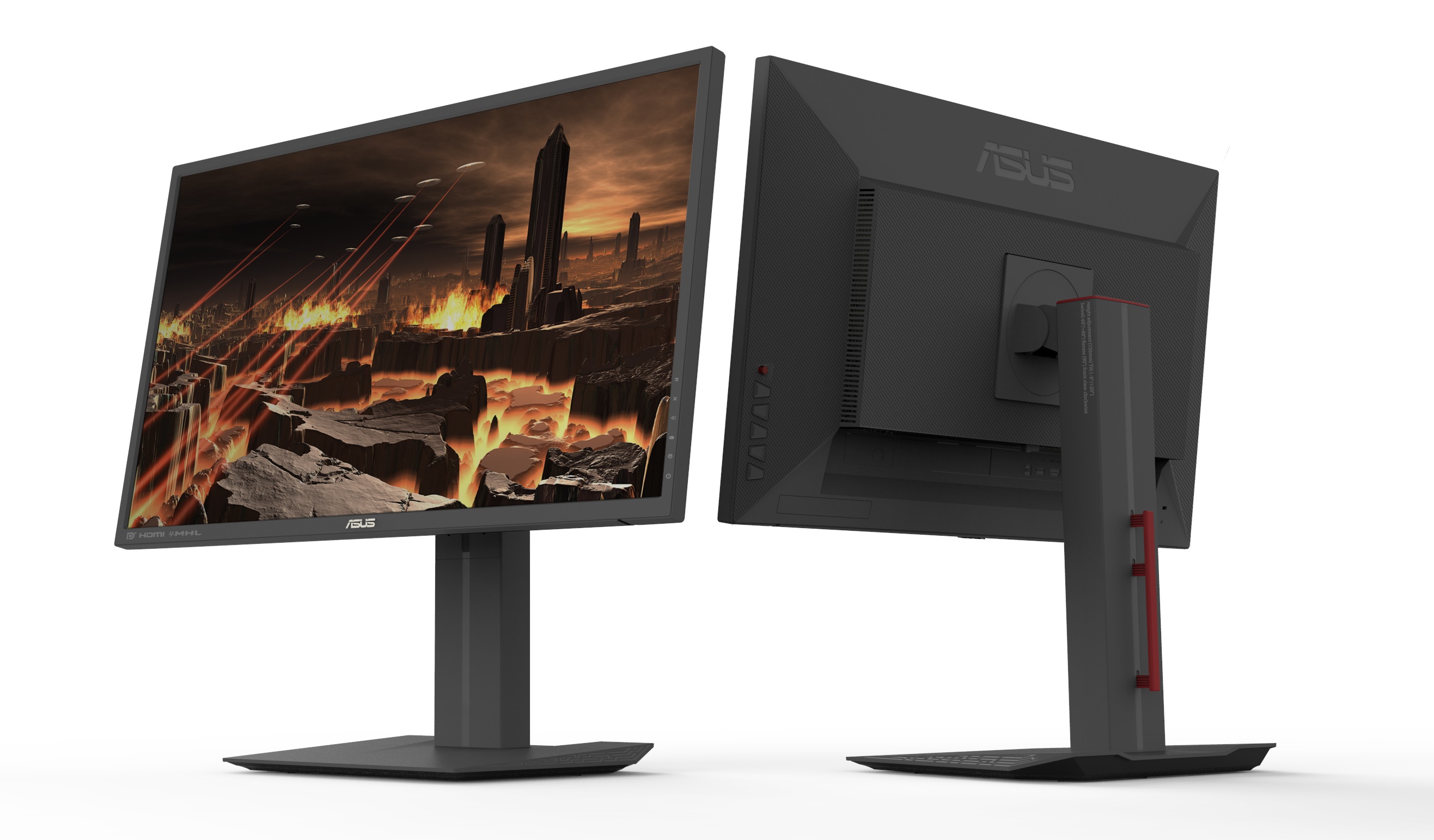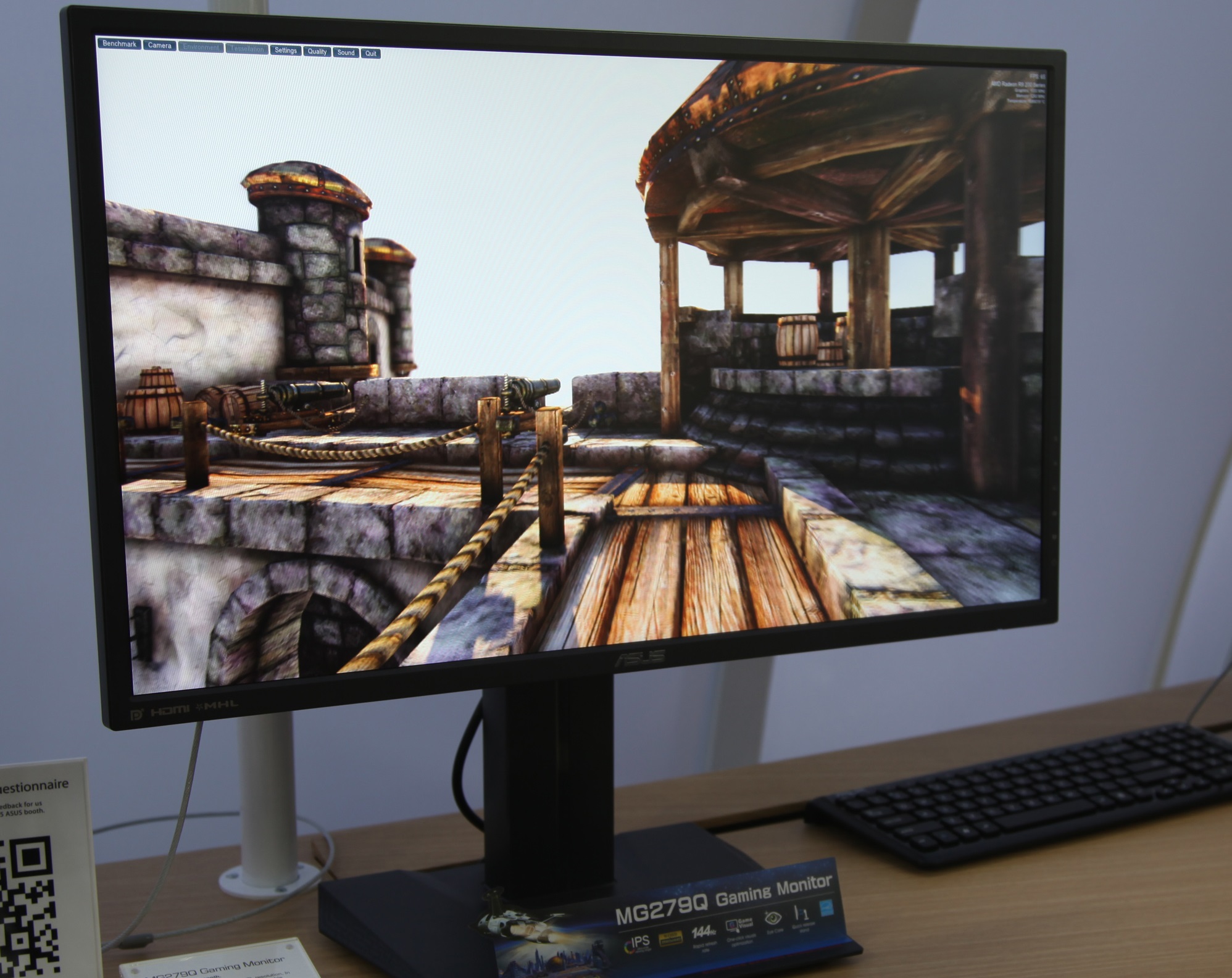The Asus MG279Q is the FreeSync monitor to get

For a few months now, I’ve had the Asus MG279Q sitting on my desk at work, where my PC it outfitted with an AMD graphics card. It’s a FreeSync monitor, meaning it has an adaptive refresh rate (from 35-90Hz, or you can choose a static refresh of up to 144Hz) and a 27-inch, 2560x1440 panel. But what I care about most is the MG279Q’s vibrant IPS panel, which gives it a leg up on most FreeSync monitors in viewing angles and color quality. In August I wrote that one of BenQ’s FreeSync monitors had almost everything I wanted for gaming. The Asus MG279Q’s IPS panel fills in the last piece of the puzzle, making it the best FreeSync monitor to own right now.
Confused about the differences between IPS and TN, refresh rate and input lag? Check out our guide to monitor technology.
For Nvidia gamers, the best monitors today are the Acer XB270HU and Asus PG279Q, which both feature extremely similar specs: 27-inch, 2560x1440 IPS displays, with refresh rates over 144Hz. Until recently, IPS panels were known for input lag and stuck at 60Hz response times. But monitor makers have finally broken past that limitation, making some amazing (though expensive) screens that combine the best of image quality and refresh. On the FreeSync side, the Asus MG279Q delivers the same features with a with a bonus: price.
With G-Sync’s proprietary hardware on board, the premiere Asus and Acer monitors cost $700-$800, while the virtually identical Asus MG279Q is $550 on Newegg. I’ve loved having it as my primary display the past few months. Colors look great even from off-angles. The base is sturdy (and allows for lots of tilting, pivoting, and height adjustments) and the bezel is fairly thin, which is nice for a 27-inch monitor that’s already taking up a good deal of space. The on-screen menu is easy to navigate thanks to a joystick nub on the rear of the display. Like most other gaming displays, it also has a light anti-gloss coating, which I like; some older IPS displays went too heavy on the coating and affected image quality, but the MG279Q doesn’t have that problem.
For deep technical analysis, I defer to TFTCentral, who write by far the most detailed monitor reviews online. In their review, they found the monitor neck-and-neck with the Acer XB270HU in terms of performance, although the Asus is missing a blur reduction feature available on the Acer monitor. Here's a quote from their MG279Q review:
“Input lag is very comparable at the maximum 144Hz refresh rate (very low lag), but because of the scaler present in the MG279Q there is more lag at the lower refresh rates. The Acer has a wider dynamic refresh rate range between 40 and 144Hz, whereas the Asus is more limited at 35 - 90Hz. To be fair, it probably doesn't make much difference to normal users as that range is more than adequate, and in fact the slightly lower minimum range might be useful to a lot of people as opposed to the higher upper limit.”
The dynamic refresh ranges they mentioned are pretty standard for G-Sync and FreeSync monitors, but the most important thing to note is that performance is nearly identical, which is great for a cheaper screen.

TFTCentral also praised the MG279Q's setup out of the box, its contrast ratio and flicker free image. Another quote: “Viewing angles and image stability were as you would expect from IPS, and certainly a key area separating this from the mass of TN Film gaming screens out there. The availability of a decent range of interface options and an internal scaler help separate this screen from G-sync models out there as well, not just because of the lower retail price.”
The biggest gaming news, reviews and hardware deals
Keep up to date with the most important stories and the best deals, as picked by the PC Gamer team.
While the monitor I’ve been using has been perfect (no light aberrations or dead pixels), I have seen customer reviews on Newegg and Amazon that point to quality control issues, with many buyers getting bad displays. Quality control seems to have been an issue with all of the high refresh IPS displays—probably because these panels are brand new tech. If you buy one, put it through its paces by testing it in a dark room and scouring for dead pixels; if you spot an issue, you can always do an RMA and get a replacement monitor for free.
In 2016, there will undoubtedly be more 27-inch FreeSync monitors with IPS displays. But right now, even though it's been available since this summer, the MG279Q is the monitor to beat. AMD gamers, take notice.

Wes has been covering games and hardware for more than 10 years, first at tech sites like The Wirecutter and Tested before joining the PC Gamer team in 2014. Wes plays a little bit of everything, but he'll always jump at the chance to cover emulation and Japanese games.
When he's not obsessively optimizing and re-optimizing a tangle of conveyor belts in Satisfactory (it's really becoming a problem), he's probably playing a 20-year-old Final Fantasy or some opaque ASCII roguelike. With a focus on writing and editing features, he seeks out personal stories and in-depth histories from the corners of PC gaming and its niche communities. 50% pizza by volume (deep dish, to be specific).

